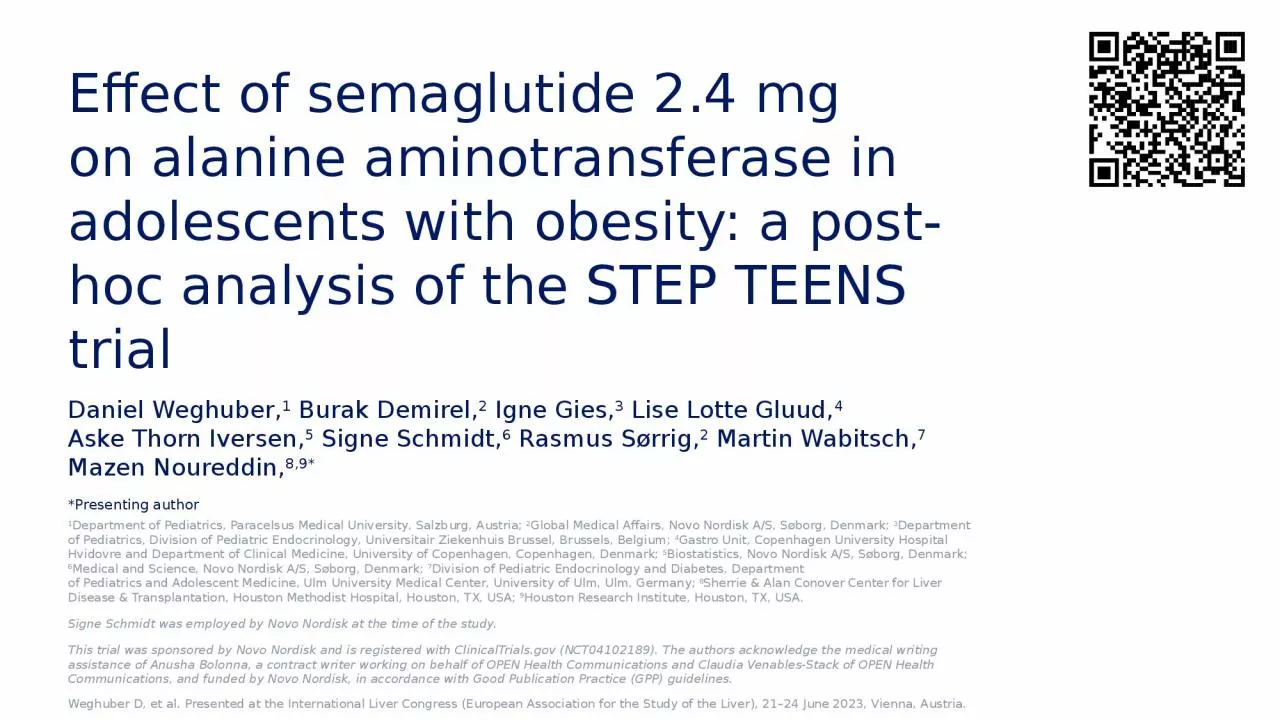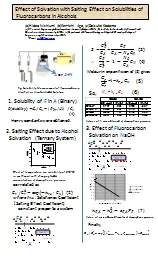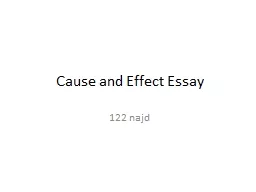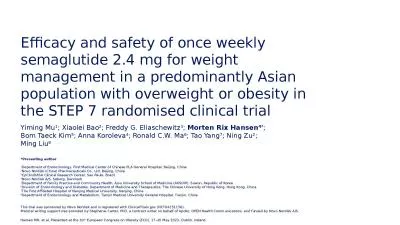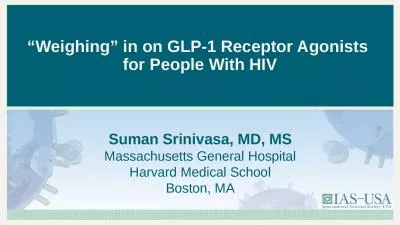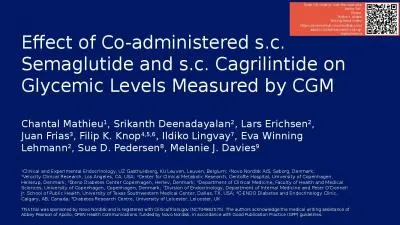PPT-Effect of semaglutide 2.4 mg
Author : ariel | Published Date : 2023-11-21
on alanine aminotransferase in adolescents with obesity a posthoc analysis of the STEP TEENS trial Daniel Weghuber 1 Burak Demirel 2 Igne Gies 3 Lise Lotte Gluud
Presentation Embed Code
Download Presentation
Download Presentation The PPT/PDF document "Effect of semaglutide 2.4 mg" is the property of its rightful owner. Permission is granted to download and print the materials on this website for personal, non-commercial use only, and to display it on your personal computer provided you do not modify the materials and that you retain all copyright notices contained in the materials. By downloading content from our website, you accept the terms of this agreement.
Effect of semaglutide 2.4 mg: Transcript
Download Rules Of Document
"Effect of semaglutide 2.4 mg"The content belongs to its owner. You may download and print it for personal use, without modification, and keep all copyright notices. By downloading, you agree to these terms.
Related Documents

